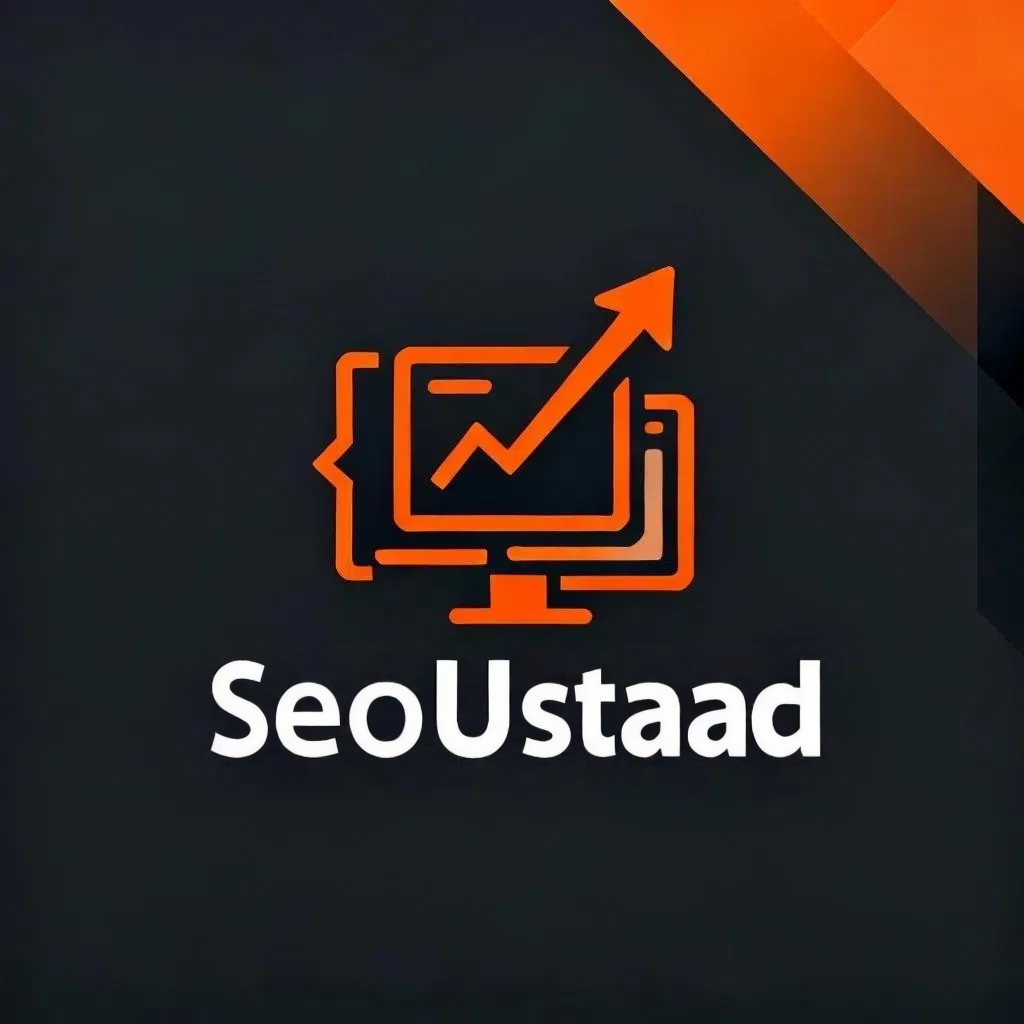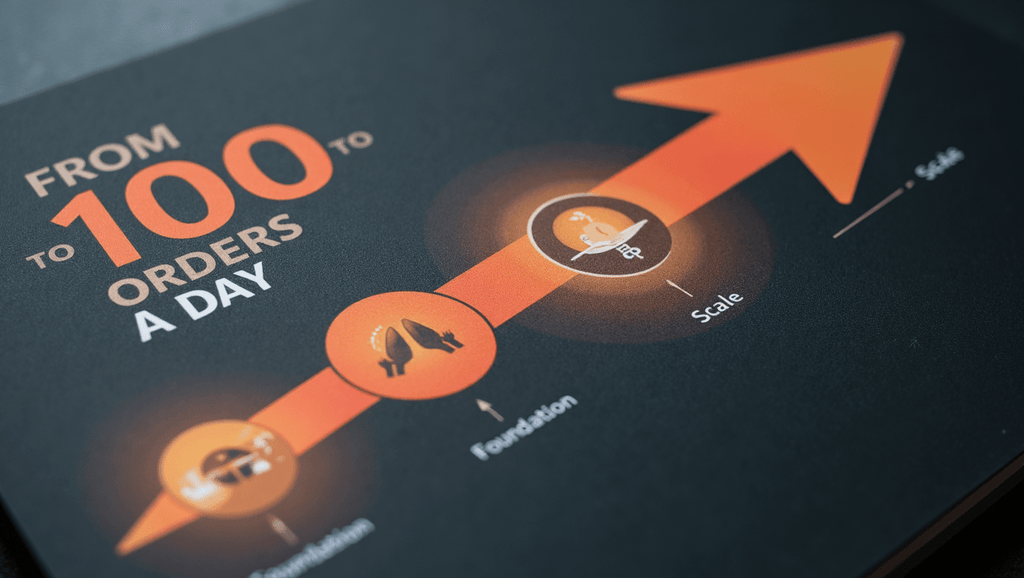How to Scale Your E-commerce Business from 10 to 100 Orders a Day
Table of Contents
- Introduction: Breaking Through the Growth Plateau
- Phase 1: Solidifying the Foundation (Getting from 10 to 30 Orders)
- Phase 2: Building for Growth (Scaling from 30 to 70 Orders)
- Phase 3: Engineering for Scale (Reaching 100+ Orders a Day)
- Conclusion: Scaling is a Process, Not a Destination
- Frequently Asked Questions (FAQ)
- Sources
Introduction: Breaking Through the Growth Plateau
You've done the hard work. You launched your e-commerce store, found your initial customers, and you're consistently hitting around 10 orders a day. This is a significant achievement, but it's also a critical turning point. The strategies that got you here are often not the same ones that will get you to the next level. The jump from 10 to 100 daily orders is not just a tenfold increase in volume; it requires a fundamental shift in mindset, systems, and strategy. At SEO Ustaad, we specialize in building growth engines for businesses. This is our definitive guide on how to scale your e-commerce business from 10 to 100 orders a day. We'll break down the journey into manageable phases, providing actionable steps for marketing and operations at each stage.
Phase 1: Solidifying the Foundation (Getting from 10 to 30 Orders)
At this stage, you have a proven concept but likely rely on manual effort and a couple of primary marketing channels. The goal here is to optimize what's working and build robust processes to handle more volume without chaos.
Marketing: Double Down on What Works
Analyze Your Current Channels
Where are your first 10 daily orders coming from? Is it a specific Facebook ad campaign, Instagram influencer shout-outs, or organic search? Use your e-commerce platform's analytics (like Shopify Analytics) and Google Analytics to identify your most profitable channel. The 80/20 rule often applies: 80% of your sales will come from 20% of your efforts. Find that 20%.
Increase Your Ad Spend Methodically
If paid ads are your primary driver, don't just 10x your budget overnight. Increase it by 15-20% every few days, carefully monitoring your Return on Ad Spend (ROAS). This allows the ad platform's algorithm to adjust and helps you maintain profitability. Focus your budget on the best-performing ad sets and creatives.
Start Basic Retargeting
This is the lowest-hanging fruit. Set up a simple retargeting campaign on Facebook/Instagram to target people who have visited your website but haven't purchased. Show them ads featuring the products they viewed or a gentle reminder. This is a crucial first step in understanding **how to scale your e-commerce business from 10 to 100 orders a day**.
Operations: Streamline Your Manual Processes
Create a Dedicated Packing Station
Stop packing orders on your dining room table. Designate a specific area with all your supplies within arm's reach: boxes/flyers, tape, scissors, shipping labels, and thank-you cards. This simple step can drastically cut down your packing time per order.
Negotiate with Your Courier
If you're using a local courier service in Pakistan (like TCS or Leopard), reaching 10-20 orders a day gives you leverage. Call them and negotiate a corporate rate. They can often provide better pricing and a daily pickup service, saving you time and money.
Basic Inventory Management
Use a spreadsheet or a simple inventory app to track your stock levels. Update it daily. Running out of your best-selling product is a scaling killer, as it halts your marketing momentum and disappoints customers.
Phase 2: Building for Growth (Scaling from 30 to 70 Orders)
You now have consistent order flow and more predictable revenue. The focus shifts from just optimizing to actively building new, scalable systems and marketing channels.
Marketing: Diversify Channels & Build Your Brand
Implement Email Marketing
If you haven't already, this is non-negotiable. Email marketing provides the highest ROI of almost any channel. [1]
What to set up:
- Welcome Series: An automated 3-part email series for new subscribers that introduces your brand and offers a small incentive.
- Abandoned Cart Flow: An automated email (or two) sent to users who add items to their cart but don't complete the purchase. This can recover up to 10-15% of lost sales. [2]
- Weekly Campaigns: Start sending a weekly newsletter with new arrivals, special offers, or valuable content to keep your brand top-of-mind.
Invest in SEO
Paid ads are like renting land; SEO is like owning it. Start investing in Search Engine Optimization to build a long-term, sustainable source of traffic. Focus on on-page SEO for your product and category pages, and begin a content marketing strategy by blogging about topics relevant to your customers.
Build a Community
Use a Facebook Group or active engagement on Instagram Stories to build a community around your brand. This fosters loyalty and creates repeat customers, which is essential for profitable scaling.
Operations: Introduce Automation and SOPs
Use an Inventory Management Software
The spreadsheet is no longer enough. Invest in a dedicated inventory management software (many integrate directly with Shopify) that can track stock across multiple channels and provide low-stock alerts.
Create Standard Operating Procedures (SOPs)
Document your entire fulfillment process step-by-step, from receiving an order to packing it and handing it off to the courier. This written guide is essential for hiring help. Your first hire, even if part-time, should be in fulfillment, as this is the most time-consuming operational task.
Upgrade Your Customer Service
Instead of handling queries from your personal WhatsApp, set up a dedicated business WhatsApp or a simple helpdesk system (like Gorgias or Zendesk) to manage customer inquiries professionally. Create template responses for common questions (e.g., "Where is my order?").
Phase 3: Engineering for Scale (Reaching 100+ Orders a Day)
At this level, your business is a serious machine. The key to reaching and sustaining 100+ orders is to focus on data, retention, and removing yourself from the day-to-day operations.
Marketing: Focus on Retention and Optimization
Master Customer Lifetime Value (CLV)
Your focus should shift from just acquiring new customers to increasing the value of your existing ones. A 5% increase in customer retention can increase profitability by 25-95%. [3]
How to do it:
- Loyalty Programs: Implement a simple points-based loyalty program to reward repeat purchases.
- Personalized Email Marketing: Segment your email list based on purchase history and send highly targeted offers.
- Subscription Models: If your product is consumable, offer a subscription model for recurring revenue.
Advanced Ad Optimization
Move beyond basic ads. Start utilizing advanced strategies like creating Lookalike Audiences from your best customer lists and running ads optimized for higher-value conversions like "Lifetime Value."
Operations: Outsource and Systemize
Consider a 3PL (Third-Party Logistics)
This is the ultimate step in scaling operations. A 3PL company will store your inventory, and then pick, pack, and ship your orders for you. While this adds a cost per order, it completely frees you from fulfillment, allowing you to focus 100% on marketing and growing the business. There are several emerging 3PL providers in major Pakistani cities.
Hire for Key Roles
You can no longer do it all. It's time to hire key roles, starting with a dedicated customer service representative and a marketing assistant to manage social media or email campaigns.
Robust Financial Tracking
Work with an accountant to move beyond basic sales tracking. You need a clear Profit & Loss (P&L) statement to understand your true profitability, factoring in ad spend, shipping costs, salaries, and cost of goods sold. This is the final, critical piece of learning **how to scale your e-commerce business from 10 to 100 orders a day**.
Conclusion: Scaling is a Process, Not a Destination
Scaling an e-commerce business is a journey of continuous evolution. Each growth phase presents new challenges that require new solutions. By systematically improving your marketing, solidifying your operations, and focusing on data, you can build a resilient and profitable business that moves far beyond the 100-order-a-day milestone. The key is to anticipate the next bottleneck and solve it before it becomes a crisis.
Ready to build your growth engine but need an expert co-pilot? Contact SEO Ustaad today to discuss a tailored strategy for scaling your e-commerce brand.
Frequently Asked Questions (FAQ)
1. When should I hire my first employee?
The best time to hire is when you find yourself spending more than 50% of your day on operational tasks (like packing orders) that are taking you away from growth activities (like marketing and strategy). A part-time fulfillment assistant is usually the best first hire.
2. How much should I be spending on marketing?
There is no magic number, but a common benchmark for a growth-stage e-commerce business is to reinvest 15-25% of its revenue back into marketing. The most important metric to track is your Customer Acquisition Cost (CAC) vs. your Customer Lifetime Value (CLV).
3. What is the biggest mistake businesses make when trying to scale?
The biggest mistake is pouring money into marketing without first fixing the underlying operations. If your fulfillment and customer service can't handle 50 orders a day, spending enough to get 50 orders will lead to shipping delays, angry customers, and negative reviews that can kill your brand's reputation.
4. Do I need my own website, or can I scale on a marketplace like Daraz?
While marketplaces are good for starting, true scaling and brand building happen on your own platform (e.g., Shopify). On your own site, you own the customer data, control the branding, and aren't subject to a marketplace's rules and fees. Use marketplaces as an additional sales channel, but make your own website the core of your business.
Sources
- Oberlo. (n.d.). Email Marketing Statistics for 2024. Retrieved from Oberlo's e-commerce resources.
- Moosend. (n.d.). Cart Abandonment Rate Statistics. Retrieved from Moosend's marketing data reports.
- Harvard Business Review. (n.d.). The Value of Keeping the Right Customers. Research by Frederick F. Reichheld and Phil Schefter.


 PKR
PKR TRY
TRY